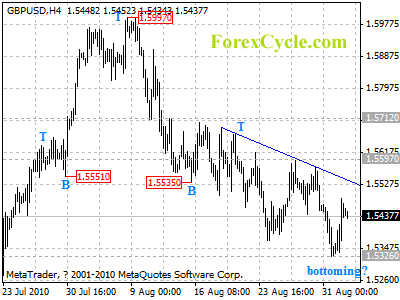Source: ForexYard
Currencies like the euro and UK pound muted gains made yesterday as investors appear to be waiting on a batch of economic data set to be released later today. Signs that the global economic recovery is speeding up may be reinforced today as the UK, euro zone and US are all forecasted to release significant news. Traders can expect major market volatility today, and excellent opportunities to increase profits.
Economic News
USD – After Dramatic Losses Yesterday, USD Awaits Fresh Unemployment Data
Following better than expected US manufacturing data yesterday, risk taking returned to the marketplace and caused the greenback to slide against the majority of its currency rivals. Both EUR/USD and GBP/USD shot up over 100 pips.
In overnight trading, the USD pared most of its losses, trading relatively steady ahead of a volatile news session today. Currently, the EUR/USD is trading around the 1.2795 level, down about 15 pips from last night. Similarly, GBP/USD is down around 18 pips and is trading around 1.5440.
Traders will want to pay particular attention to the latest US unemployment claims figure today, as well as the Pending Home Sales report, set to be released at 12:30 and 14:00 GMT respectively. While unemployment is not forecasted to change significantly from last week, the figure is notoriously difficult to predict.
Should a better than expected figure come in, investor confidence will likely be boosted, leading to further losses for the buck. Predictions for the Pending Home Sales number are for a marked improvement over last monthly period. If true, traders can expect the USD to continue to slide.
Traders should remember that any trend in the market today is likely to dramatically change tomorrow with the release of the latest US Non-Farm Payrolls (NFP) figure. The figure consistently leads to market volatility and should be carefully paid attention to.
EUR – Euro Set to Extend Gains Today
Following a dramatic return to risk taking in the market yesterday, the euro saw significant gains against its major counterparts throughout the day. In addition to the dollar, the euro saw bullish movement against both the yen and Swiss franc.
The EUR/JPY jumped some 130 pips yesterday before staging a mild downward correction in overnight trading. Currently the pair stands at 107.60. The EUR/CHF moved up over 100 pips, and is currently holding onto its gains. The pair has been trading around the 1.3015 price level throughout the night.
Investors are eagerly awaiting the news from the ECB press conference, scheduled to take place at 12:30 GMT. While an increase in euro zone interest rates are unlikely, the press conference will provide an opportunity for the ECB to give any predictions regarding the current state of the European economic recovery. Any positive sentiment will likely help the euro extend its recent gains in afternoon trading.
In addition, euro pairs will likely be affected by the latest US Unemployment Claims figure. Better than expected unemployment data should lead to an increase in risk taking and boost the euro against its main currency rivals.
JPY – Yen Tumbles as Risk Taking Returns to Marketplace
The yen took dramatic losses yesterday against many of its counterparts as investor confidence in the global economic recovery boosted riskier assets. The GBP/JPY moved up some 100 pips throughout the day, and is currently trading around 129.95. Against the euro, the Japanese currency was able to recoup some of its earlier losses in overnight trading. The EUR/JPY has fallen about 50 pips in the last few hours, and is currently trading around the 107.60 level.
Today, should positive market news continues to be released, the yen will likely see further losses. Traders will want to pay attention to the ECB press conference, as well as the US Unemployment Claims and Pending Home Sales figures. At the same time, these events could very well disappoint, in which case a return to risk aversion may occur in afternoon trading. In that case, the safe haven yen could see a fairly profitable day.
Crude Oil – Crude Oil Prices Rise despite US Inventories Report
An increase in US crude oil inventories did not stop prices from increasing dramatically yesterday. Typically speaking, larger inventories mean that there is decreased demand in the US which causes prices to drop. This was not the case yesterday, as the weakened dollar helped boost commodity prices, including oil. Crude prices jumped over $2, and currently stand at $73.82 a barrel.
Today, crude oil prices will largely be based on whether risk taking persists in the marketplace. Should positive news from the euro zone and US be released, the greenback is likely to remain low against its main currency rivals. In this case, international demand for oil will increase, driving up prices. At the same time, should risk aversion return to the marketplace, crude oil may drop in afternoon trading.
Technical News
EUR/USD
The Bollinger Bands on the hourly chart appear to be tightening in anticipation of another consolidation point, which will likely precede another sharp movement. As a result, many of the technical indicators on this pair appear to be floating in neutral territory, the exception begin the weekly RSI which has the pair just entering the over-bought region. It appears this pair is expecting volatility which explains the neutrality of most indicators. However, the weekly chart’s RSI does suggest long-term downward pressure which makes short positions appear more favorable.
GBP/USD
The weekly chart’s RSI has the price of this pair floating in the over-bought territory since 3 weeks ago, suggesting a growing level of downward pressure. The recent bearish cross on the weekly chart’s Stochastic (slow) and subsequent downward movement on the oscillator also support this notion. Going short may be preferable today.
USD/JPY
This pair has broken through its 15-year low mark of 85.00 and currently sits about 80 pips lower. We would expect to see indicators pointing towards an upward correction and this is indeed the case, but only on the weekly chart. The weekly RSI has the price in the over-sold territory, but there are few other indicators to support an upward correction. It appears as if the larger picture of this pair is for a continuation of the downtrend.
USD/CHF
The price of this pair appears to be floating in the over-sold region on the 4-hour, daily and weekly RSI, suggesting strong upward pressure. Recent bullish crosses on the 4-hour and weekly Stochastic (slow) support this notion. Going long with tight stops appears to be the best strategy for the day.
The Wild Card
Gold
The price of this commodity appears to have pushed it into the over-bought region of the daily RSI, but has recently dropped a bit lower than the over-bought region’s lower border. We are now seeing the price beginning to correct back downwards. A bearish cross is also forming imminently on the weekly Stochastic (slow), suggesting that now may be a great entry point for forex traders interested in capturing fast profits before the weekend.
Forex Market Analysis provided by ForexYard.
© 2006 by FxYard Ltd
Disclaimer: Trading Foreign Exchange carries a high level of risk and may not be suitable for all investors. There is a possibility that you could sustain a loss of all of your investment and therefore you should not invest money that you cannot afford to lose. You should be aware of all the risks associated with Foreign Exchange trading.

